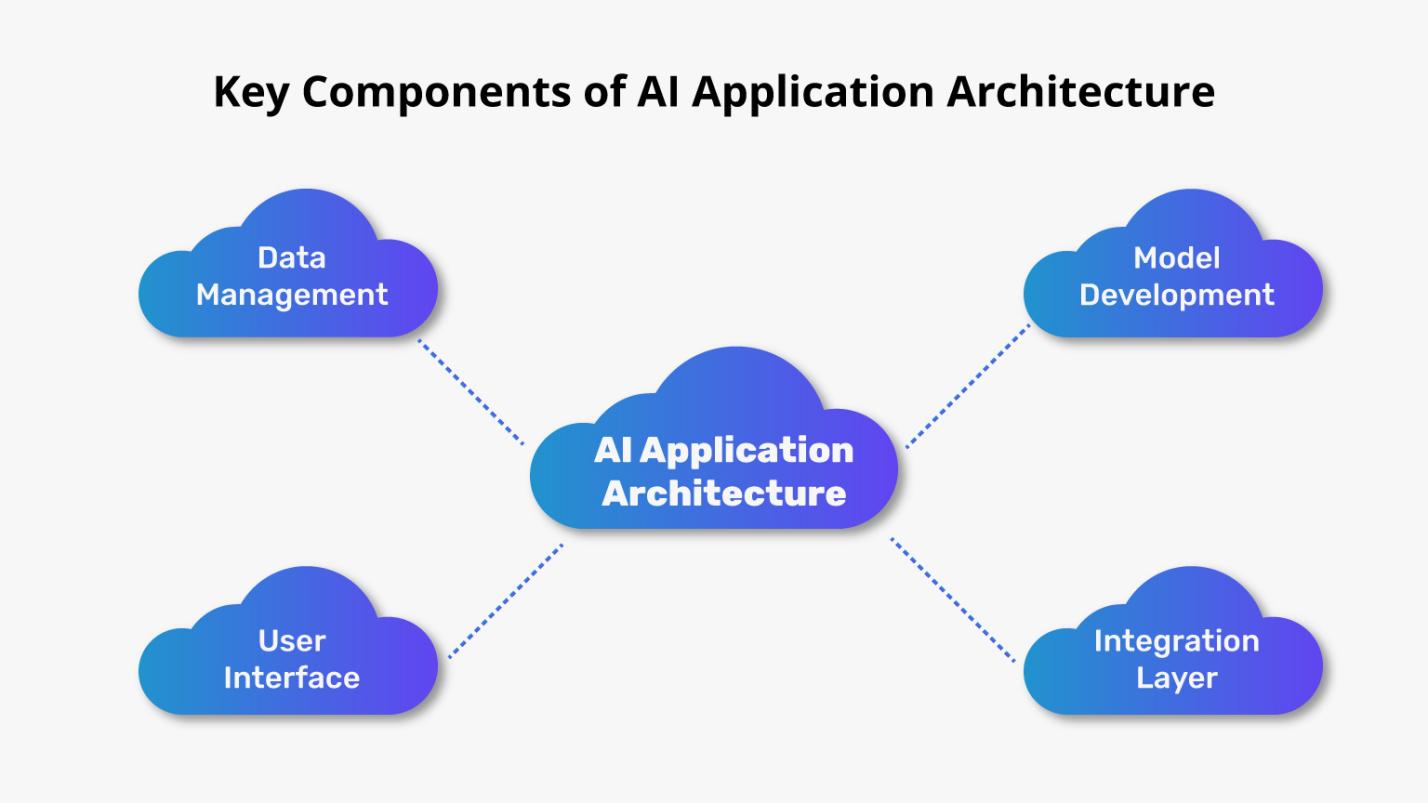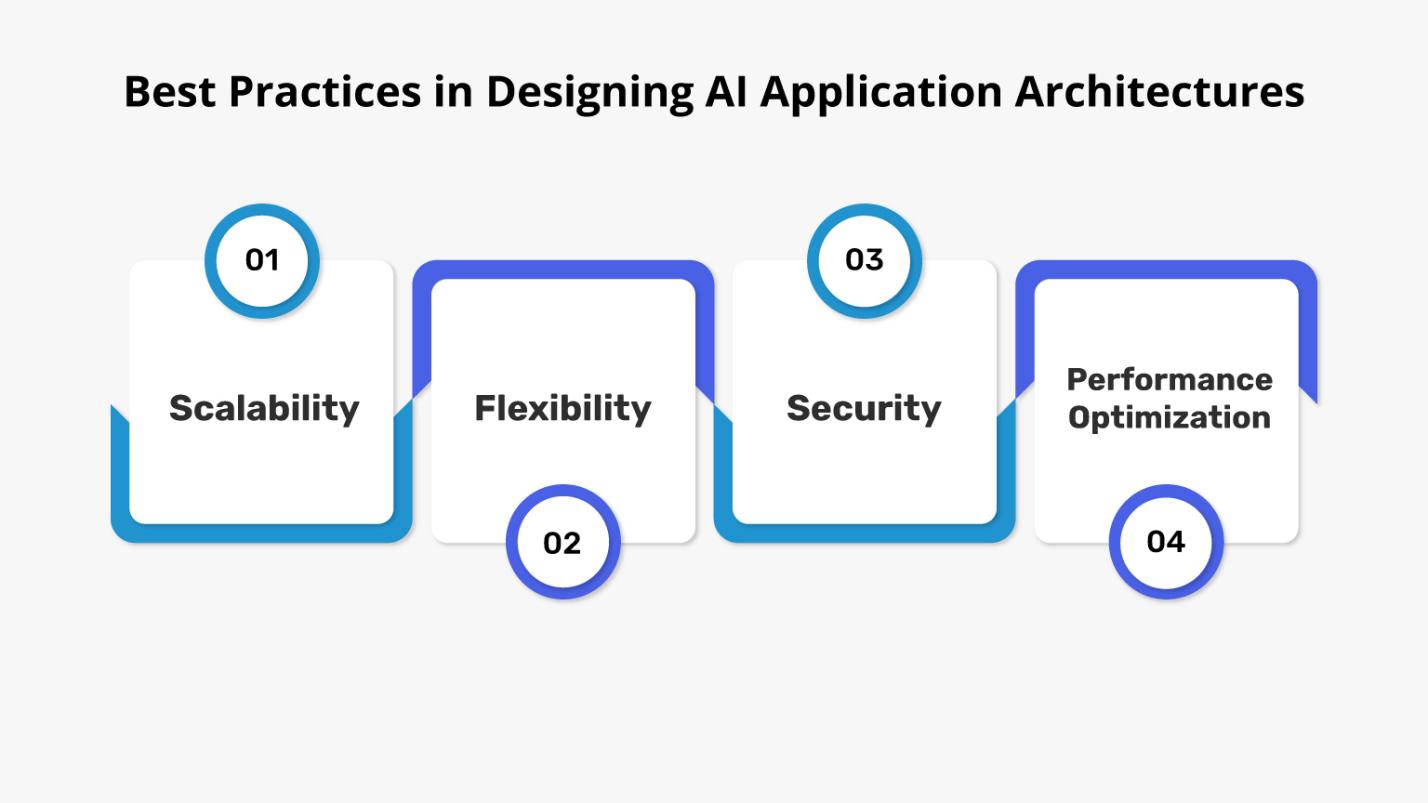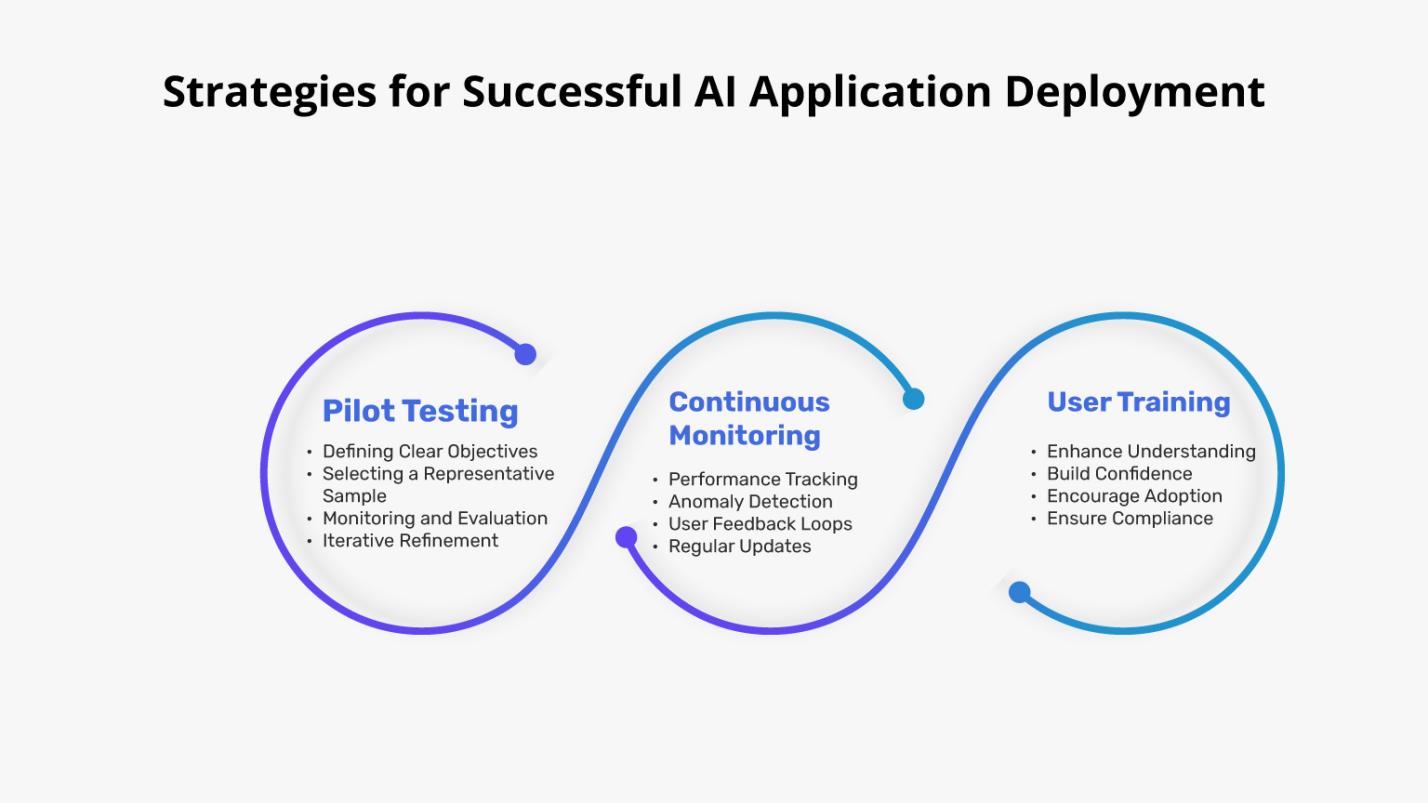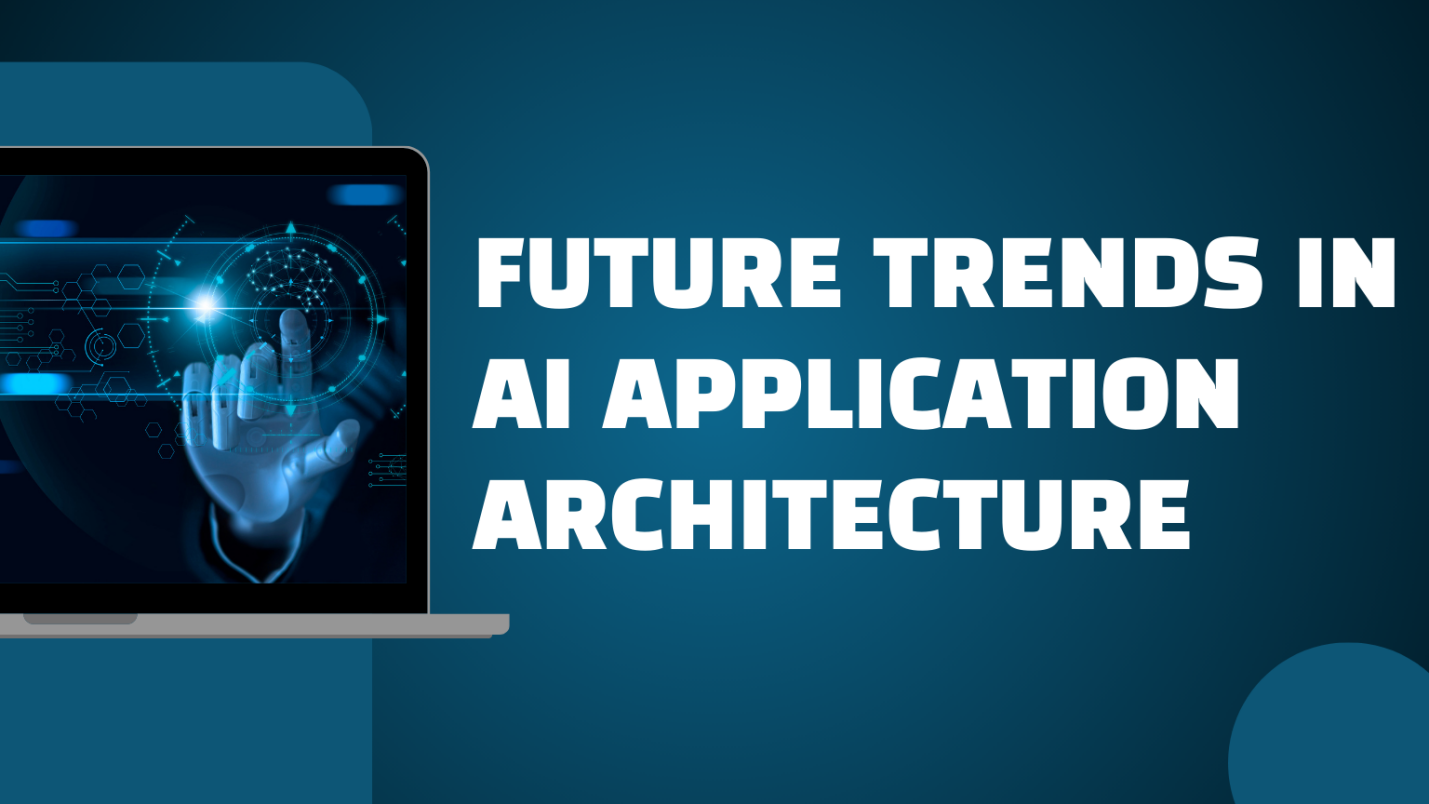Designing Robust AI Application Architectures: Best Practices and Strategies

With today’s changing business world, infusion into organizations is an aspect of making companies more effective using AI. Robust architectures are key success factors in application with business systems such as scalability, efficiency, and adaptability for companies wanting to achieve their fullest extent using AI. Fx31 Labs has pioneered the creation of AI systems that solve multiple types of business challenges.
Key Components of AI Application Architecture

Data Management
Any AI relies on data. Good data management is concerned with the harvesting, storage, and processing of big data toward quality, availability, and usability. Advanced techniques in data engineering form the core for Fx31 Labs in collecting enormous diverse data sets from sources like databases, APIs, and streams in real-time.
Through automated data pipelines, this cleaning, normalization, and preprocessing happens in the background; the ETL processes are dealt with. Based on the characteristics of data and use cases, efficient storage solutions such as SQL or NoSQL databases and data lakes are chosen.
Security measures, including encryption and access controls, are implemented to protect sensitive information and ensure compliance with regulations like GDPR.
Model Development
Right algorithms for a given task are selected and optimized for the development of effective AI models. Fx31 Labs is excellent in building and training AI models such as evaluating problems so that the most suitable machine learning algorithms, including deep learning paradigms, can be applied.
Once an algorithm is decided upon, optimization of efficiency and accuracy through hyperparameter tuning is facilitated. Some apply grid search or Bayesian optimization, and in those scenarios, engineers often resort to parallelization to accelerate training, especially with large models and big datasets.
Techniques such as transfer learning can be used to adjust the pre-trained models so that they adapt into specific tasks, thus saving time and resources in training on the same existing models.
Integration Layer
Seamless communication between AI components and the existing systems is a determinant of efficiency in operation. Fx31 Labs specializes in developing strong integration layers that support interoperability between AI models and the current infrastructure of an organization. This is done by creating APIs and middleware that allow different software applications to communicate effectively so that AI solutions can be integrated without disrupting the existing workflows. Taking a modular approach, Fx31 Labs provides businesses with flexibility and resilience to scale and adjust their AI capacities according to changing needs.
User Interface
Intuitive interfaces are one of the essentials for user acceptance and satisfaction for end-users. Fx31 Labs is deeply user-centric. It means the design of the interfaces is such that they must be not only functional but engaging and easy to use. They ensure that AI applications meet the needs and expectations of end-users through proper user research and usability testing. This makes the overall user experience better, and thus there is greater engagement and effective use of AI solutions.
Architecture in AI applications determines the effectiveness and efficiency of applications in a business setting. Fx31 Labs has taken an integrated approach toward data management, model development, integration, and designing user interfaces. It has been equipping businesses with tools and expertise to unleash the true potential of AI. By focusing on such key components, organizations can thus develop AI applications which are not just powerful but scalable, secure, and user-friendly, enabling them to make the most out of the contemporary digital landscape.
Artificial Intelligence, in recent times, has been emerging as a force of transformation within the digital landscape to enable businesses to enhance their operations, drive innovation, and keep ahead in this competitive business environment. To enable effective implementation of AI solutions, a scalable architecture for AI applications should be designed. This is an example of the best practices Fx31 Labs adopted in designing such architectures while ensuring scalability, flexibility, security, and high performance.
Best Practices in Designing AI Application Architectures

Scalability
Scalability is a prime concern in the architecture of an AI application, such that systems can cope with increasing volumes of workloads and data without degrading the performance. Scaly architectures include designing modular components that can be scaled independently, making use of distributed computing resources in handling large data sets and computationally intensive processing. Fx31 Labs uses cloud-based solutions as well as microservices architectures for scalability, enabling easy expansion according to business growth.
Flexibility
Flexibility enables AI systems to be adaptive to change in business dynamics and technology. This is realized by designing architectures with modular components and standardized interfaces, making it easy to integrate new features and technologies. Fx31 Labs uses flexible design principles, where clients can change and extend their AI applications in response to changes in the market and organizational objectives.
Security
Implementation of appropriate security measures will prevent unauthorized access to the highly sensitive data, thus keeping the user’s private data confidential. The best practices followed in this concern are implementation of encryption protocols, access controls, and security audits to identify the vulnerability and mitigate the same. Fx31 Labs gives considerable importance to security and follows industry standards and regulations to avoid being prone to threats and data breaches, for making AI applications robust.
Performance Optimization
Performance optimization is one of the critical factors that help AI applications be efficient and responsive. To this end, model optimization, more efficient data processing pipeline, and hardware acceleration are utilized. The performance optimization focus area is at Fx31 Labs where the fine-tuning of AI models takes place along with the usage of advanced computing resources for it to work decently under any condition.
Fx31 Labs’ Approach to AI Application Architecture
Customized Solutions
Fx31 Labs specializes in tailoring AI models to address specific business challenges. By conducting thorough assessments of client needs, they develop bespoke solutions that align with organizational goals and industry requirements. This customized approach ensures that AI applications deliver maximum value and effectiveness.
Integration Expertise
Seamless integration of AI with already existing processes can make all the difference in becoming operationally efficient. Fx31 Labs is well-versed in integrating AI solutions without affecting the current workflow, making use of APIs and middleware to allow seamless communication between different AI components and legacy systems. Thus, it allows business functionalities to improve while preserving the process.
Utilizing Emerging Technologies
Cutting-edge AI application development needs technological up-gradation. Fx31 Labs use TensorFlow, PyTorch, and AutoML platforms for the development and deployment of sophisticated AI models. In this manner, the clients get to experience the fruits of the most recent innovation in AI, resulting in applications that are strong and ready for the future.
Focus on User-Centric Design
The core practice of Fx31 Labs is that AI applications should be available and accessible. They always pay attention to putting the needs of users first; they practice extensive user research and usability testing, which help them create more intuitive interfaces for easy user engagement and satisfaction. This approach towards the end-user experience would determine that AI solutions are functional and generally adopted, making them effective.
For AI application architectures, holistic design would address scalability, flexibility, security, and performance. This is the strength of Fx31 Labs in ensuring tailored solutions, strong integration, implementation of cutting-edge technologies, and user-focused designs. The abovementioned considerations help organizations deliver AI applications that are reliable, resilient, flexible, and strategically sound, making the business robust to sustain through times of flux.
Effective deployment of AI applications requires proper planning and adherence to best practices targeting functionality, performance, and usage. In the long run, for a business that wishes to stay competitive, knowledge of emergent trends of AI application architectures is very important. This paper outlines strategies for deploying AI applications to succeed and looks into emerging trends that form AI application architectures.
Strategies for Successful AI Application Deployment

Pilot Testing
Before full-scale implementation, pilot testing is required to test the functionality and performance of the AI application in a controlled environment. Pilot testing allows organizations to identify issues, assess the impact of the application on the current processes, and gather user feedback for refinement. Key steps in pilot testing include:
- Defining Clear Objectives: This involves specifying clear goals for what the pilot is to achieve, such as performance benchmarks or user satisfaction targets.
- Selecting a Representative Sample: A representative subset of users or processes should be selected to reflect the general environment in which the AI application will operate.
- Monitoring and Evaluation: During the pilot phase, metrics to measure performance, usability, and integration capabilities should be implemented.
- Iterative Refinement: With the insight from the pilot, adjustments will be made on necessary areas for a broader release.
Following this process will eliminate some of the risks involved with full-scale roll out and have a better likelihood of success in roll out.
Autonomous Intelligence Framework
Continuous Monitoring
This is very key in AI applications, once deployed in a system for continuous performance; the steps include
- Performance Tracking: Measuring how efficiently, accurately, and reliably the application performs at intervals.
- Anomaly Detection: Establishing mechanisms to identify anomalies or errors as soon as they occur and correcting them immediately.
- User Feedback Loops: Creating channels through which issues are reported and the system improved.
- Regular Updates: The app remains updated for new features and patch updates for the security.
Always monitoring the AI application to adhere to the changing operational environment goals.
User Training
The success of the AI application is greatly pegged on how sophisticated its user is. For this purpose, training includes multiple programs aimed to achieve competence
- Enhance Understanding:Enlighten the user on the potential and limitation of the application.
- Build Confidence: Provide job experience to create confidence in handling the application.
- Encourage Adoption: Reduce fears and focus on the benefits to increase adoption.
- Ensure Compliance: Educate the users on data privacy and security policies of the application.
A successful user training increases adoption and maximizes return on investment in AI technologies.
Future Trends in AI Application Architecture

Adoption of Generative AI
Generative AI is changing the style of doing business operations in different sectors of industries. Some applications are content creation, design, and prototyping, as well as personalization;
- Content Creation: This generates articles, reports, and marketing materials.
- Design and Prototyping: Assisting in creating product designs and prototypes rapidly.
- Personalization: Designing real-time customized user experiences.
The incorporation of generative AI into business processes increases creativity, efficiency, and personalization, giving a competitive advantage in the marketplace.
BlockTech Solutions
Integration of Blockchain
The merging of AI and blockchain technology is becoming an excellent approach to improve the security and transparency associated with AI applications.
- Data Integrity: Tamper-proof and verifiable data used by the AI models.
- Decentralization: Reduces dependence on central data repositories, which is a single point of failure.
- Auditability: Provides clear records of data usage and decision-making processes to meet compliance requirements and ensure accountability.
This synergy between AI and blockchain creates trust and reliability in AI applications, especially in finance and healthcare sectors.
Advancements in AutoML
Automated Machine Learning, or AutoML, makes model development easier and more accessible to businesses who do not possess this kind of expertise.
Advancements in AutoML offer:
- Efficiency: Progress in AutoML is efficient as less time is used in the development and deployment of AI models.
- Cost-Effectiveness:These improvements in AutoML also make them cost-effective since fewer barriers to entry exist because less specialized personnel are required.
- Scalability: This is the capability to iterate and deploy models very fast with the changing business needs.
As AutoML technologies mature, they enable businesses to use their AI capabilities much more effectively by fostering innovation and agility.
LeewayHertz – AI Development Company
Strategic pilot testing, continuous surveillance, and adequate user training in AI applications will be the success factors. The main drivers in the near future will be the movement towards generative AI, blockchain integration, and AutoML, which will lead to the development of strong and innovative architecture for AI applications. With this approach and awareness of emerging trends, organizations can be ahead in leveraging AI to achieve growth and sustenance in a fast-changing digital world..
Conclusion
In the rapidly changing digital environment, robust AI application architectures must be designed by businesses to make efficient use of artificial intelligence. Among these are some of the critical aspects of the architecture::
- Data Management: This includes efficient strategies for data collection, storage, and processing, so that the AI models will be trained on good quality information to provide more accurate and reliable outcomes.
- Model Development: Advanced algorithms of machine learning and deep learning are possible for creating complex models which can handle intricate tasks and can generate insightful predictions.
- Integration Layer:Ensuring seamless communication between the AI components and existing systems will help in operational efficiency. It will be able to enhance its current processes with minimum disruption for the business.
- User Interface: Developing intuitive and user-friendly interfaces encourages effective interaction between the end-user and AI applications, which would promote higher adoption rates and effective usage.
Fx31 Labs is dedicated to providing cutting-edge AI solutions tailored to a business’s specific needs. Focus on GenAI customized services enhances the process of developing software and optimizing the functioning of processes in the achievement of client goals.
Their services include staff augmentation, MVP development for start-ups, mobile application and web development, and remote CTO services.
Fx31 Labs is able to deliver innovative high-quality AI solutions that drive the business growth and maintain the competitive advantage in the market with the proficiency of their multi-programming languages and advanced technologies.
